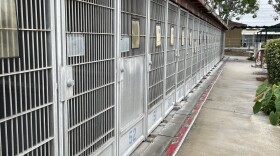KYIV, Ukraine — Russia bombed Ukraine's capital Kyiv for the first time in more than a month, destroying a facility that repairs broken train cars.
Four Russian missiles slammed into four separate buildings at the large railway compound. A fifth missile landed nearby, outside the compound. One railway worker suffered a minor injury but no one else was hurt in the strike at around 5 a.m. local time Sunday.
Russia claimed it destroyed tanks and other armored vehicles, but NPR saw no sign of weapons at the scene.
Russian ground forces pulled back from the Kyiv area two months ago. The last airstrike on Kyiv was April 28.
Unleashing a relatively large strike on Kyiv once again suggests that Russian forces believed they had located a valuable target. Most of the heavy fighting in the more than 100-day old war has shifted to the east of the country.
"I was one of the first to arrive at the scene, and to witness with my own eyes, there are no military objects here," a Ukrainian railway official said.
Journalists invited to the scene found caved-in roofs, collapsed brick walls, broken glass crunching underfoot, and one structure still smoldering. But no weapons were visible.

"We don't have any military machinery on our factory. Only freight railcars that help us export grain and iron ore," Alexander Kamyshin, the CEO of Ukraine's railways, said on Twitter.
Russian ships have cut off Ukrainian grain exports by sea, forcing Ukraine to use trains and trucks to move grain out of the country — though it comes with plenty of logistical challenges. More than 20 million tons of grain are trapped in Ukraine, worsening a global food crisis.
Copyright 2022 NPR. To see more, visit https://www.npr.org. 9(MDAzMjM2NDYzMDEyMzc1Njk5NjAxNzY3OQ001))







